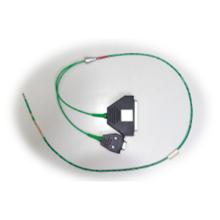Project Overview
Already at small extents, urinary incontinence leads to social, at larger extents even to health problems. Costs for medical appliances alone are estimated at 500 million Euros in Germany every year. Through demographic change, an increasing amount of people are affected by urinary incontinence. It may have various causes, one being the degeneration of the muscles forming the sphincter-complex with age. Conventional treatment (e.g. medication, surgery) cannot cure this cause.
In cooperation with the University of Tübingen a new therapy based on autologous stem cells to regenerate the sphincter muscles is investigated. The desired therapeutic effect is an overall higher or better applied force on the urethra. Knowledge of the force-distribution around the urethra is necessary to determine the therapeutic success. Additionally, weak spots in the sphincter have to be found in order to apply the stem cells in the right places. A special catheter is used to measure the pressure profile along the urethra. Due to different artifacts the use of such measurments is limited. Coughing of the patient, for instance, results in a large peak in the measured data. Moreover, there is no known correlation across patients bewteen measured pressures and continence. Furthermore, the pressure profile exerted by the sphincter on the outside is altered by the urethra. Therefore, a mathematical model is used to reconstruct the pressure exerted by the sphincter on the outside of the urethra from the measured pressure profile on the inside. Model generation and validation is initially done on a test stand, later mini-pigs are used.
For data aquisition a prototype of a novel microtip catheter is used, which is equipped with significantly more pressure sensors than catheters in clinical use today. Its highter spatial resolution enables a more precise aquisition of the pressure profile inside the urethra (High-Definition Urethral Pressure Profilometry, HD-UPP). Additionally, this catheter is equipped with an acceleration sensor, which allows spatial mapping of the measured data. Moreover, this data enables the reconstruction of the urethra's geometry in the sagittal plane.
Publications
| Publications |
- , “Assessing the reproducibility of high definition urethral pressure profilometry and its correlation with an air-charged system”, Neurourology and Urodynamics, pp. 1-9, 2016, doi:10.1002/nau.23115
- , “Signal processing in urodynamics: towards high definition urethral pressure profilometry”, BioMedical Engineering OnLine, 15, pp. 1-24, 2016, doi:10.1186/s12938-016-0145-6
- , “High Definition Urethral Pressure Profilometry: Evaluating a Novel Microtip Catheter”, Neurourology and Urodynamics, 2015, doi:10.1002/nau.22835
- , “Towards a Treatment of Stress Urinary Incontinence:Application of Mesenchymal Stromal Cells for Regeneration of the Sphincter Muscle”, Journal of Clinical Medicine, pp. 197-215, 2014, doi:10.3390/jcm3010197
- , “Increasing Spatial Resolution through Automated Catheter Rotation in High Definition Urethral Pressure Profilometry”, IEEE International Conference on Automation Science and Engineering (CASE), 2016
- , “Eliminating Pulse-Induced Artifacts in Urethral Pressure Data”, International Conference of the IEEE Engineering in Medicine and Biology Society (EMBC), Milano, Italy, 2015, pp. 2779-2783, doi:10.1109/EMBC.2015.7318968
- , “Using Deconvolution to Determine the Sphincter Strength Distribution Around the Urethra”, IEEE International Symposium on Medical Measurements and Applications (MeMeA), 2015, pp. 6-11, doi:10.1109/MeMeA.2015.7145163
- , “Sampling lattice and signal reconstruction in urodynamics”, Signal Processing (ICSP) 12th International Conference on, 2014, pp. 1790-1796, doi:10.1109/ICOSP.2014.7015302
Contact

Cristina Tarín
Prof. Dr.-Ing.Deputy Head of Institute



